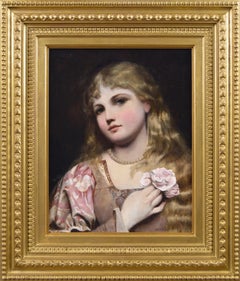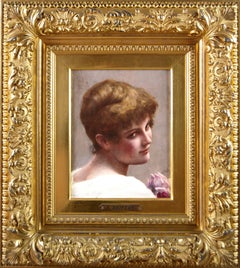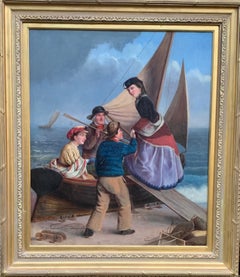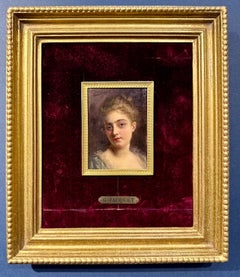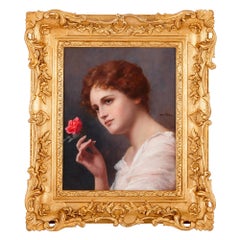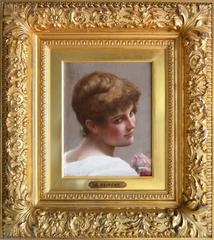Alfred Seifert Paintings
Alfred Seifert was born in Praskolesy, Bohemia (present-day Czech Republic), on 6th September 1850. His talent as an artist emerged after he started drawing while recuperating from a serious illness. Seifert was taught by Karel Würbs, the inspector of Estates Gallery at Prague Castle and Alois Kirnig (1840–1911). In 1869, he was admitted into the Academy of Fine Arts in Munich, studying under Michael Echter (1812 – 79), Alexander von Wagner (1838–1919) and Johann Leonhard Raab (1825 –99). During this time, he started producing portraits of women and developed his signature style focussing on heads of girls, which became known as Seifert type. Many of his works are a study of the sitter’s profile and are beautifully composed using harmonious colors and tones. His portraits of women often include flowers such as the pink rose, which represents youth and beauty. In 1876, Seifert opened his workshop in Munich and started exhibiting in Germany and Prague. He became a popular artist in Germany, achieving success and spent most of his life there. Seifert died in Munich on 6th February 1901. Examples of his work can be found at the Laing Art Gallery, Newcastle upon Tyne and the Rudolfinum, Prague.
19th Century Victorian Alfred Seifert Paintings
Oil, Panel
19th Century Alfred Seifert Paintings
Oil, Panel
1860s Victorian Alfred Seifert Paintings
Oil
1860s Victorian Alfred Seifert Paintings
Oil, Wood Panel
1820s Victorian Alfred Seifert Paintings
Oil, Canvas
Early 18th Century Italian School Alfred Seifert Paintings
Oil, Wood Panel
1890s Victorian Alfred Seifert Paintings
Canvas, Oil
1910s Victorian Alfred Seifert Paintings
Oil, Board
1870s Victorian Alfred Seifert Paintings
Oil
Early 1900s Victorian Alfred Seifert Paintings
Oil
Mid-17th Century Alfred Seifert Paintings
Oil, Panel, Wood Panel
1840s Victorian Alfred Seifert Paintings
Oil, Board
Late 19th Century Impressionist Alfred Seifert Paintings
Oil, Wood Panel
Late 19th Century Victorian Alfred Seifert Paintings
Oil
Late 19th Century Naturalistic Alfred Seifert Paintings
Canvas, Oil
19th Century Victorian Alfred Seifert Paintings
Oil, Panel
